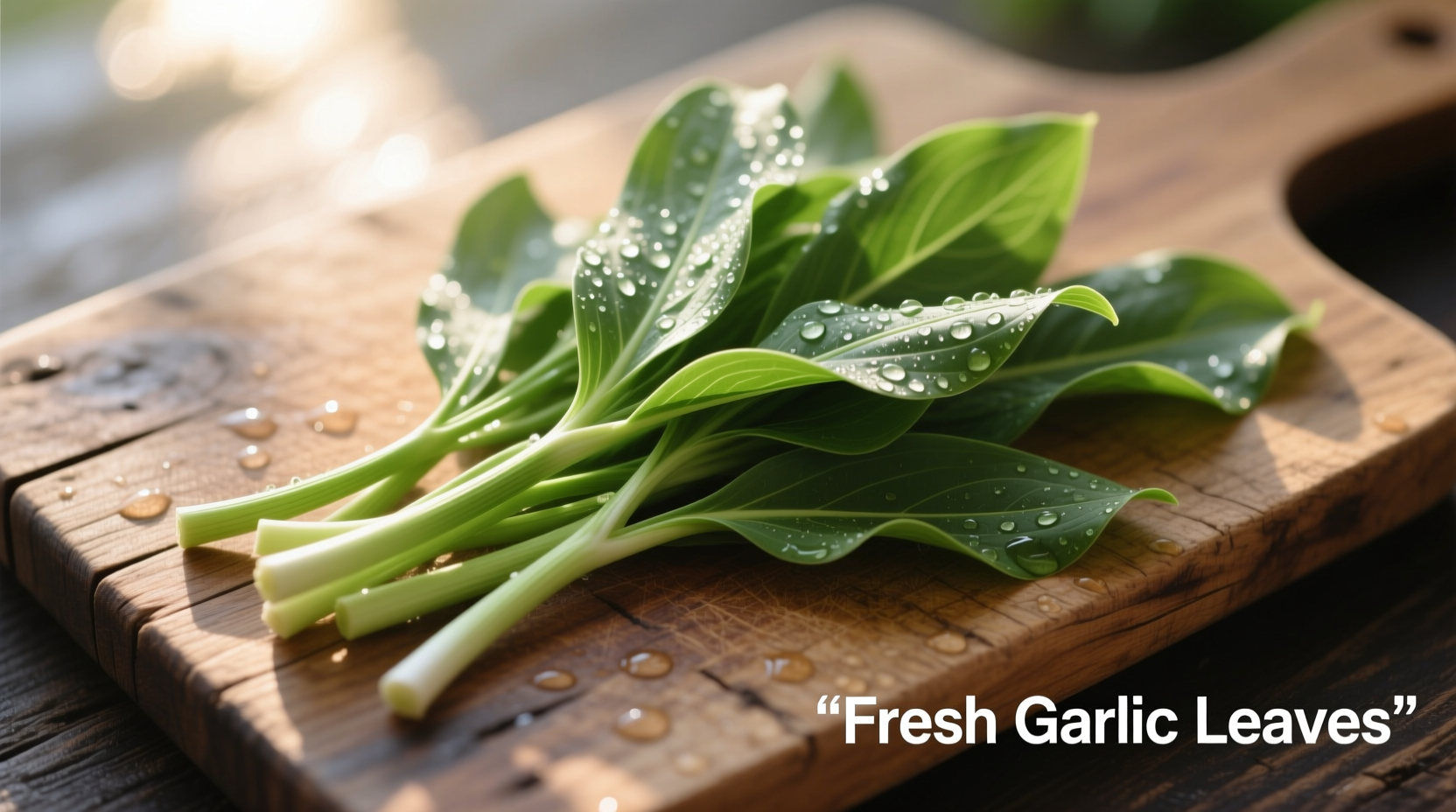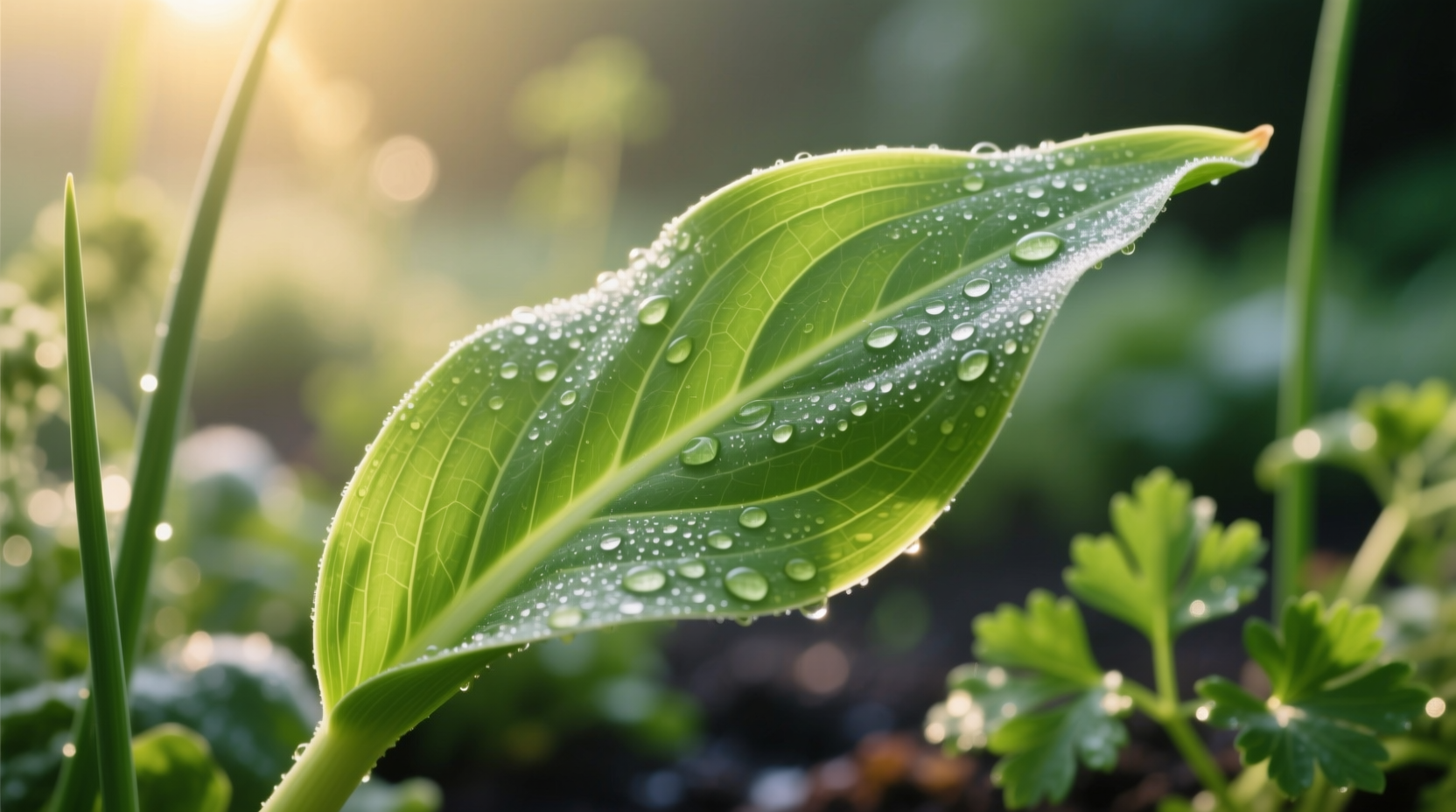Many home cooks mistakenly search for "garlic leave" when they actually mean garlic leaves—the vibrant green shoots that emerge from garlic plants before bulb formation. Unlike the familiar garlic cloves, these tender greens provide a delicate garlic flavor that transforms ordinary dishes into restaurant-quality creations. Understanding how to identify, harvest, and utilize garlic leaves unlocks a world of culinary possibilities while maximizing your garlic plant's potential.
What Exactly Are Garlic Leaves?
Garlic leaves (Allium sativum) represent the green foliage that grows above ground from garlic bulbs. These hollow, flat-tubed greens emerge during the plant's growth cycle, typically appearing 4-6 weeks after planting. Unlike garlic scapes—the curly flowering stalks of hardneck garlic varieties—garlic leaves develop from the plant's base and maintain a consistent flat profile throughout their growth.
| Characteristic | Garlic Leaves | Garlic Scapes | Garlic Bulbs |
|---|---|---|---|
| Appearance | Flat, hollow tubes | Curly flowering stalks | Cloves in papery skin |
| Flavor Profile | Mild, fresh garlic essence | Subtle garlic with asparagus notes | Intense, pungent garlic |
| Harvest Time | Early growth stage | Mid-season (before flowering) | Full maturity (bulb formation) |
| Primary Use | Culinary garnish & flavoring | Stir-fries, pesto, pickling | Base flavoring in most cuisines |
This factual comparison clarifies common confusion between garlic plant components. University agricultural extensions consistently emphasize that garlic leaves provide the earliest edible harvest from garlic plants, appearing weeks before scapes or bulbs develop.
Nutritional Benefits Backed by Research
According to USDA FoodData Central analysis, garlic leaves contain significant concentrations of allicin compounds—responsible for garlic's health benefits—but with a more balanced nutrient profile than mature bulbs. A 100g serving provides:
- 145% of daily vitamin K requirement
- 92% of recommended vitamin C intake
- Substantial calcium and iron content
- Antioxidant levels 30% higher than mature garlic bulbs
These nutritional advantages make garlic leaves particularly valuable in Asian culinary traditions where they've been incorporated into dishes for centuries. The National Center for Biotechnology Information documents traditional Chinese medicine applications of young garlic greens for digestive health support.
Culinary Applications: Maximizing Flavor Potential
Professional chefs consistently praise garlic leaves for their ability to deliver garlic essence without overwhelming other ingredients. Their culinary versatility spans multiple applications:
Raw Applications
Thinly sliced garlic leaves work beautifully as finishing elements. Add them to:
- Asian noodle dishes during the final plating stage
- Fresh spring rolls for aromatic complexity
- Salad compositions requiring subtle garlic notes
Cooked Transformations
When exposed to heat, garlic leaves undergo remarkable flavor development:
- Stir-fries: Add during the last 30 seconds of cooking
- Soups and broths: Use as aromatic base similar to scallions
- Omelets and frittatas: Chop finely and incorporate with eggs

Harvesting and Storage Best Practices
Timing proves critical when harvesting garlic leaves. University extension services recommend cutting leaves when they reach 6-8 inches in height, taking no more than one-third of the plant's foliage at any time. This sustainable harvesting approach ensures continued plant growth while providing fresh greens.
For optimal storage:
- Refrigeration: Wrap in slightly damp paper towels inside airtight containers (up to 10 days)
- Freezing: Blanch for 60 seconds, then freeze in portion-sized bags (up to 6 months)
- Drying: Hang in small bundles in cool, dark spaces for culinary use in winter months
Contextual Usage Guidelines
Understanding when not to use garlic leaves proves as important as knowing their applications. Culinary experts identify specific context boundaries:
- Not suitable as direct substitutes for mature garlic in recipes requiring intense garlic flavor
- Best avoided in slow-cooked dishes where prolonged heat diminishes their delicate flavor
- Ideal for dishes requiring fresh garlic notes without pungency
- Perfect pairing with seafood, poultry, and vegetable-focused dishes
Common Mistakes to Avoid
Based on professional kitchen observations, these errors frequently undermine garlic leaf usage:
- Overcooking: Their delicate structure requires minimal heat exposure
- Improper storage: Leaving them loose in refrigerator drawers causes rapid wilting
- Misidentification: Confusing them with toxic look-alikes like wild onion varieties
- Wasted potential: Discarding these edible greens when growing garlic at home
Remember that garlic leaves represent a sustainable way to reduce food waste while enhancing your culinary repertoire. Their seasonal availability typically runs from early spring through mid-summer, making them a valuable addition to seasonal cooking rotations.











 浙公网安备
33010002000092号
浙公网安备
33010002000092号 浙B2-20120091-4
浙B2-20120091-4